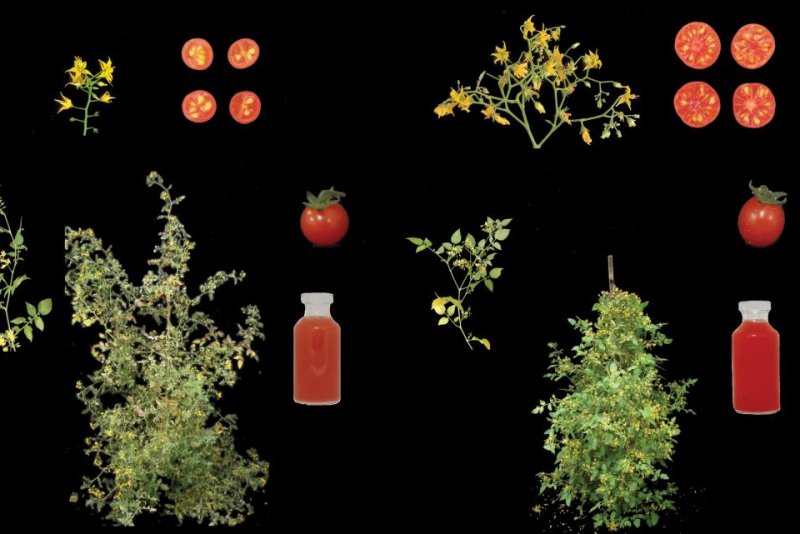Through genetic engineering, biologists combined the genetic benefits of tomato domestication with the genetic advantages of wild tomatoes. Photo by Agustin Zsögön/Nature Biotechnology
Oct. 2 (UPI) -- Scientists have developed a new tomato crop variety by editing the genome of a wild tomato plant.
The new technique could allow scientists to combine the genetic diversity of wild plants with the genetic qualities identified by generations of breeding.
Humans have been cultivating crops for thousands of years, breeding plants to produce varieties with advantageous qualities -- increased hardiness and higher yields. But plant breeding isn't all good.
Many modern plant varieties lack genetic diversity as a result of breeding. The process has also resulted in the loss of characteristics related to flavor and aroma.
In an effort to solve the problems associated with over-breeding, scientists turned to the gene editing technology CRISPR-Cas9. Researchers used CRISPR-Cas9 to edit the genome of a wild tomato plant, inserting the genetic coding responsible for advantageous characteristics, as identified by modern plant breeding research.
The result is a brand new crop, a tomato variety with a variety of modern features -- but with the added genetic properties of the wild plant.
"This new method allows us to start from scratch and begin a new domestication process all over again," Jörg Kudla, a professor of biology at the University of Münster in Germany, said in a news release. "In doing so, we can use all the knowledge on plant genetics and plant domestication that researchers have accumulated in recent decades. We can preserve the genetic potential and the particularly valuable properties of wild plants and, at the same time, produce the desired features of modern crops in a very short time."
Researchers in Germany, the United States and Brazil worked together to modify Solanum pimpinellifolium, the currant tomato, a wild species found in Ecuador and Peru. The plant's small fruit -- pea-sized tomatoes -- and low yield make it unviable as a crop.
Scientists modified six of the wild plant's genes, lending the new tomato a variety beneficial traits. The new tomato plant produces more and larger fruit, roughly the size of a cherry tomato. The genetic modification also yielded more oval-shaped fruits, which are less likely to split when it rains. Scientists were also able to engineer higher levels of lycopene, a valuable antioxidant.
The research team described their success in a new paper published this week in the journal Nature Biotechnology.
"This is a decisive innovation that cannot be achieved by any conventional breeding process with currently cultivated tomatoes," Kudla said. "Lycopene can help to prevent cancer and cardiovascular diseases. So from a health point of view, the tomato we have created probably has an additional value in comparison with conventional cultivated tomatoes and other vegetables, which only contain lycopene in very limited quantities."
Trying to reintroduce the genetic qualities of wild plants through breedings would be a long and laborious process, but with CRISPR-Cas9, scientists can produce a brand new crop in a short amount of time.
Researcher think the new technology could allow biologists to engineer new crops from wild plants previously uncultivated and unused by humans.















